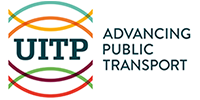
Two weeks ago, UITP experts commissioned by the city government of Moscow travelled to the Russian capital and assessed its public transport network. Here are the main conclusions of their report.
In 2011, the Transport Department of Moscow launched a set of reforms in order to upgrade mobility in the Russian capital, infamous for its congestion issues. After four years, the city asked UITP to assess the first measures implemented and provide recommendations for further action.
From 28 to 30 September, an international team composed of four public transport experts from UITP membership organisations travelled to Moscow to explore the public transport network and its organisation.
“We were impressed by the positive changes introduced in the Moscow public transport system and by the strong political will to upgrade mobility in the city,” said UITP Deputy Secretary General Mohamed Mezghani, who led the work onsite. “One of the keys to its success is that the city has adopted a holistic approach aiming at restricting car traffic, improving and promoting public transport, and supported by an effective and strong branding strategy.”
A high-performing metro system and an upgraded surface transport network
With eight million passengers daily, the Moscow metro network is one of the world’s largest systems. The report issued at the end of the UITP mission underlines its efficacy. Its 90-second headway at peak hours and its 170m-long trains make it a model of efficiency and operational performance. Moreover, the operation of the metro system proves to be very flexible: metro schedules can change every month to adapt to demand.
The main challenges lie in demand-management at peak hours, accessibility for people with reduced mobility and the peripheral connection between suburbs. An extension of the metro network is planned to meet rising demand.
The surface transport network (buses, trolleybuses…) is being improved with the introduction of low floor vehicles (98% of the fleet), air conditioning (50%) and the upgrade of emission standards (60% of buses are Euro IV and V).
Private operators now service a large fleet and the introduction of gross cost contracts with ridership and quality incentives are part of the modernisation of the whole public transport system.
Still too much traffic congestion
The main challenge of the city remains car traffic, however. Daily, more than three million cars line the city’s streets. Despite recent measures to tackle this problem based on parking charges, Moscow’s mobility policy is still too favourable to private cars. Additional measures like diverting car traffic, pedestrianising central areas and congestion charging could help in this respect.
Besides private cars, taxis also add to congestion. With easy to obtain licenses and affordable fares, taxis have become a very popular mode both for drivers and passengers. The result: 55,000 taxis (eight times the size of the fleet in 2010) now add to the congestion on the streets. But to be able to limit this number, the regulatory framework should be adapted with more restrictive measure in order to control taxi numbers and the quality of service provided.
Despite the challenges that are still to be addressed, the overall assessment of the public transport policy and system was very positive, especially thanks to the efforts to develop and modernise the network. Technological innovation introduced such as the growing exploitation of operational data, the implementation of new bike and car-sharing fleets to the existing public transport network, integrated contactless ticketing (“Troika”) are positive steps making public transport both easier to use and more attractive.
Mohamed Mezghani presented the conclusions of the report today at the Moscow Urban Forum. The Moscow Department for Transport will consider UITP's recommendations for the further implementation of urban mobility reforms.
About UITP
As a passionate champion of sustainable urban mobility, UITP is internationally recognised for its work in advancing the development of this critical policy agenda. UITP has a long history to its name, and is the only worldwide network to bring together all public transport stakeholders and all sustainable transport modes.
Our vision
We are working to enhance quality of life and economic well-being by supporting and promoting sustainable transport in urban areas worldwide.
Our missions
Every day we make a difference for our members and for the wider sustainable transport community.




Comments
There are no comments yet for this item
Join the discussion